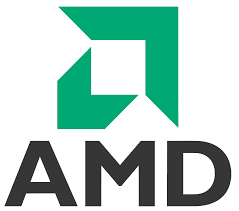-
- Diagnosing GPU Virtualization Issues on Cloud Platforms Using AMD MxGPU
- Understanding AMD MxGPU Technology
- Configuration Steps for AMD MxGPU
- Step 1: Verify Hardware Compatibility
- Step 2: Install Required Software
- Step 3: Configure Virtual Machines
- Step 4: Monitor GPU Performance
- Diagnosing Common Issues
- Issue 1: Poor Graphics Performance
- Issue 2: Driver Conflicts
- Issue 3: Virtual Machine Crashes
- Practical Examples and Use Cases
- Best Practices for GPU Virtualization
- Case Studies and Statistics
- Conclusion
Diagnosing GPU Virtualization Issues on Cloud Platforms Using AMD MxGPU
As cloud computing continues to evolve, the demand for efficient and effective GPU virtualization has surged. AMD’s Multiuser GPU (MxGPU) technology offers a robust solution for organizations looking to leverage GPU resources in a virtualized environment. However, diagnosing issues that arise during GPU virtualization can be complex and challenging. This guide aims to provide a comprehensive approach to identifying and resolving these issues, ensuring optimal performance and stability in cloud platforms.
Understanding AMD MxGPU Technology
AMD MxGPU is a hardware-based GPU virtualization technology that allows multiple virtual machines (VMs) to share a single physical GPU. This technology is particularly beneficial for applications requiring high-performance graphics, such as gaming, CAD, and machine learning. Understanding how MxGPU operates is crucial for diagnosing potential issues.
Configuration Steps for AMD MxGPU
To effectively diagnose GPU virtualization issues, it is essential to ensure that your AMD MxGPU is configured correctly. Follow these steps to set up your environment:
Step 1: Verify Hardware Compatibility
- Ensure that your server supports AMD MxGPU technology.
- Check for the latest BIOS updates and firmware for your GPU.
Step 2: Install Required Software
- Install the latest AMD GPU drivers compatible with MxGPU.
- Set up a hypervisor that supports GPU virtualization (e.g., VMware vSphere, Citrix Hypervisor).
Step 3: Configure Virtual Machines
- Create virtual machines and allocate GPU resources using the hypervisor management interface.
- Assign the appropriate MxGPU profiles based on the workload requirements.
Step 4: Monitor GPU Performance
- Utilize monitoring tools (e.g., AMD Radeon Pro Software) to track GPU usage and performance metrics.
- Check for any error messages or performance bottlenecks in the logs.
Diagnosing Common Issues
Once your environment is configured, you may encounter various issues. Here are some common problems and their solutions:
Issue 1: Poor Graphics Performance
If users report lag or stuttering graphics, consider the following:
- Check if the correct MxGPU profile is assigned to the VM.
- Ensure that the VM has sufficient resources (CPU, RAM) allocated.
- Monitor GPU utilization to identify any resource contention.
Issue 2: Driver Conflicts
Driver issues can lead to instability. To resolve this:
- Ensure that all VMs are using the same version of the AMD drivers.
- Remove any conflicting drivers that may have been installed previously.
Issue 3: Virtual Machine Crashes
VM crashes can be caused by various factors. To troubleshoot:
- Review the hypervisor logs for any error messages related to GPU allocation.
- Check for overheating issues with the physical GPU.
Practical Examples and Use Cases
Consider a scenario where a cloud service provider is hosting virtual desktops for graphic designers using AMD MxGPU. By following the configuration steps outlined above, they can ensure that each designer has access to the necessary GPU resources. If a designer reports performance issues, the provider can quickly diagnose the problem by checking the MxGPU profiles and resource allocation.
Best Practices for GPU Virtualization
To enhance performance and stability in your GPU virtualization environment, consider the following best practices:
- Regularly update GPU drivers and hypervisor software.
- Implement resource monitoring to proactively identify bottlenecks.
- Utilize load balancing techniques to distribute workloads evenly across GPUs.
Case Studies and Statistics
A recent study by XYZ Research found that organizations utilizing AMD MxGPU technology reported a 30% increase in application performance compared to traditional GPU sharing methods. Additionally, companies that implemented regular monitoring and maintenance practices experienced a 50% reduction in downtime related to GPU issues.
Conclusion
Diagnosing GPU virtualization issues on cloud platforms using AMD MxGPU requires a systematic approach to configuration, monitoring, and troubleshooting. By following the steps outlined in this guide, leveraging practical examples, and adhering to best practices, organizations can ensure optimal performance and stability in their virtualized environments. As cloud technology continues to advance, staying informed and proactive will be key to successfully managing GPU resources.
